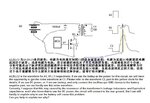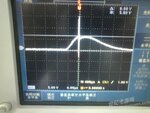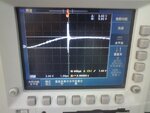vampire_sir
Newbie level 3
Please refer to the picture below, A2, B2 and C2 are the waveform for A1, B1 and C1 respectively; if I use the battery as the power supply for this circuit, we will have the chance to get a spike on the output waveform as C2 at the circuit position C1. Please refer to the waveform C2, part in the yellow circle for the details. If I use a DC power supply, or even I use the battery power supply, but connect the oscilloscope GND clamps to the battery negative part, I can then get the spike to be removed.
Currently, I suppose that this may be caused by the resonance of the transformer's leakage inductance and Equivalent capacitance, and I also know that to use this DC power supply, the circuit will connect to the real ground through the DC power supply. But I still can't explain why to use the battery power supply will cause this problem.
I am really appreciated if you can help to make me clear on this.

Below are the real C2 waveform


Currently, I suppose that this may be caused by the resonance of the transformer's leakage inductance and Equivalent capacitance, and I also know that to use this DC power supply, the circuit will connect to the real ground through the DC power supply. But I still can't explain why to use the battery power supply will cause this problem.
I am really appreciated if you can help to make me clear on this.

Below are the real C2 waveform

